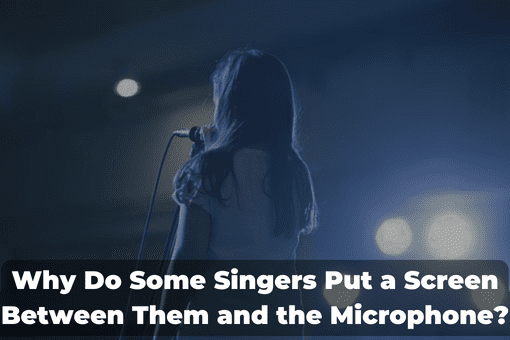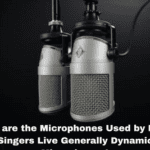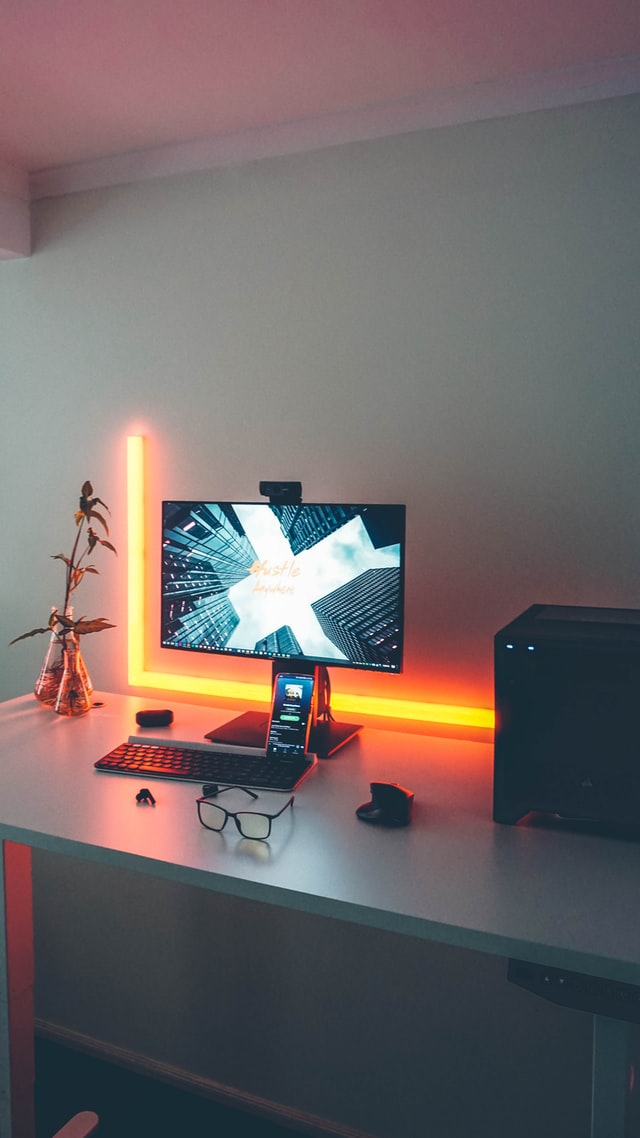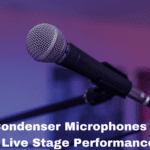Say, “The baby lifted the gorgeous flower,” with your fingers about an inch from your lips. On the consonants “b,” “f,” and “p,” you should be able to feel some air movement coming from your mouth.
Why do some singers put a screen between them and the microphone? A microphone’s diaphragm must move much farther than usual due to that slight increase in wind movement. Once it overshoots the natural resting point, it begins to behave like a spring, being forced in one direction before being pulled back by the tension of the spring. It repeats this movement one or two more times before coming to rest. The sound we want to record doesn’t include any of this wind movement.
The diaphragm’s excessive movement distorts the sound waveform, which can also overtax the electronics. A fine mesh screen between the vocalist and the microphone is a straightforward fix. Little gaps in the mesh allow sound to get through while scattering wind blasts in different directions, which lowers the wind’s velocity at the microphone’s diaphragm.
Why Are Pop Filters Used in Microphones?
In the studio, pop filters are typically employed on vocal mics. By releasing plosive energy before it reaches the microphone, microphone pop filters remove vocal pops and plosives from the microphone signal. Utilizing a pop filter in professional studio recording is frequently required to decrease the possibility of plosive-induced microphone overloading, even if grilles, caps, and windscreens will undoubtedly aid in plosive protection.
Recommended Article: Why are the Microphones Used by Most Singers Live Generally Dynamic Microphones?
Whenever the vocal tract is briefly closed off and suddenly opened back up, the result is a vocal plosive. This action releases a burst of air from the speaker’s mouth. Plosives occur on the following letters’ hard consonants in English:
- B: the lips contracting and expanding
- P: the lips smacking together and parting.
- D: tongue and top of mouth closing close to teeth
- T: tongue and tip of mouth closing near teeth
- G: closure of the tongue, rear of the mouth, and beginning of the throat
- K: closure of the tongue, rear of the mouth, and beginning of the throat
Pop filters are comprised of a thin, woven cloth with tiny holes. Nylon and perforated steel mesh are the two primary materials. Why do some singers put a screen between them and the microphone? Plosive energy is lost as it contacts the pop filter screen.
The straight and powerful plosive at the front of the pop filter screen disperses and becomes much weaker when it travels through the screen. Pop filters have placed some distance from the microphone’s body (unlike the typical grille or windscreen). The separation permits the plosive energy to dissipate before it can affect the mic diaphragm completely.
Why are screens used on microphones?
Mics feature screens (grilles/caps) to physically shield their delicate diaphragms. Screens reduce wind noise and shield against plosives (pop filters) (windscreens). In addition to offering the protection above, perforated screens permit sound waves to pass through and reach the diaphragm.
Related Article:
How do Microphones in Live Concerts Not Get a Lot of Feedback From all the Noise?
Can You Use a Condenser Mic for Live Performance?
What Type of Microphone Do Most Musicians Use?












